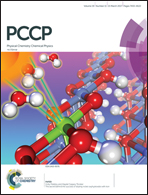Photomanipulation of the anchoring strength using a spontaneously adsorbed layer of azo dendrimers
Abstract
We systematically studied the photoinduced anchoring transition in a nematic liquid crystal containing azo dendrimers. Because the azo dendrimers in the trans-isomer state were spontaneously adsorbed at substrate surfaces, which was confirmed by optical second-harmonic generation (SHG), a homeotropic orientation was established at the first stage. Ultraviolet (UV) light irradiation triggered a transition into a planar state which was accompanied by a suppression of the SH generation. The monotonic decrease of the effective scalar order parameter with increasing UV light intensity was determined by polarized attenuated total reflection infrared (ATR-IR) spectroscopy. The variation of anchoring strength and extrapolation length was evaluated by observing the Fréedericksz transition as a function of UV light intensity at a certain visible (VIS) light intensity. Such a photoinduced variation can be interpreted as a variation of the anchoring strength depending on the trans/cis ratio at the surfaces based on a modified Rapini-Papoular model. Thus, this system provides the opportunity for a controlled change in the anchoring strength.



 Please wait while we load your content...
Please wait while we load your content...